From Palaces to Pop Culture: The Royal Chandelier's Legacy
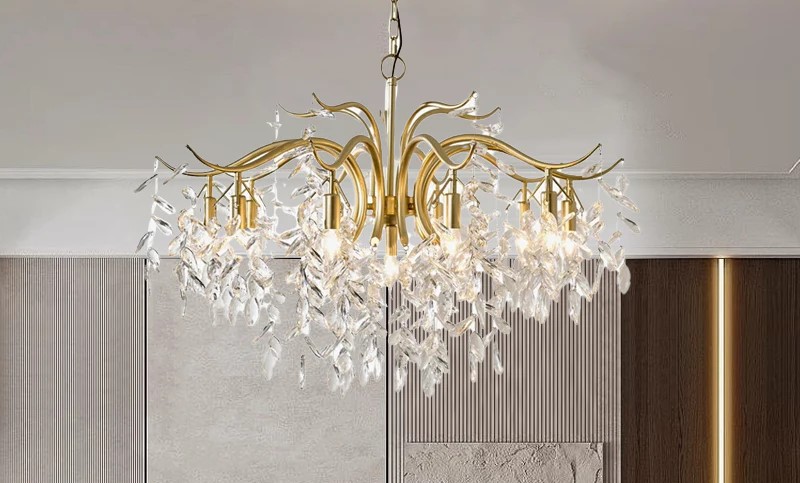
You can't help but admire the beauty of a royal chandelier. Its detailed design and sparkling crystals have shown power and style for years. Picture walking into a large room, where its soft light changes the mood and adds luxury. Once only found in royal palaces, this stunning piece now decorates modern homes and appears in pop culture too. But why has it lasted so long? How has this famous item stayed popular over time? Let’s explore the secret of its timeless charm.
Key Takeaways
Royal chandeliers have a long history, changing from basic to fancy designs.
They are more than lights; they show importance and beauty, making places look special.
Today’s chandeliers mix old styles with new ideas, staying popular in modern homes.
Chandeliers are seen in movies and shows, adding style and drama to scenes.
Picking the right chandelier can change a room, making it stylish and unique.
The Origins of the Royal Chandelier
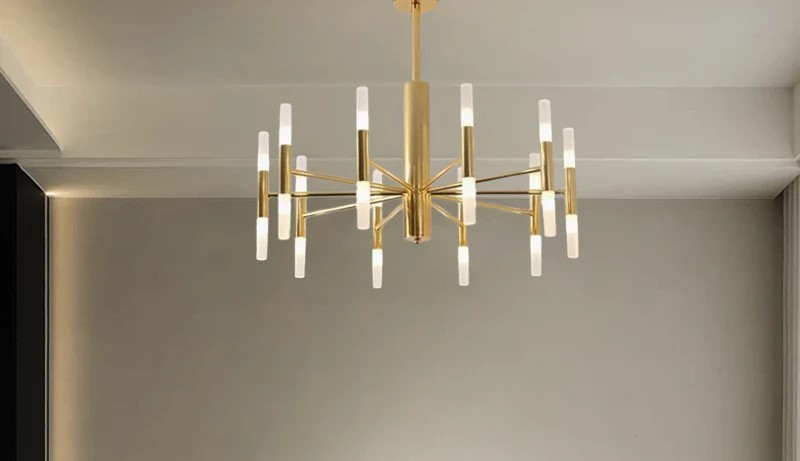
Craftsmanship and Design in Early Royal Chandeliers
Have you ever thought about how royal chandeliers became so special? Their story started long ago, with skilled workers spending weeks or months making them. Early ones, like the round "coronas" from the 12th century, were simple but meaningful, often shaped like crowns. These were made from wood and early crystals, showing the talent of the makers. By the 15th and 16th centuries, Flemish chandeliers appeared. They had a central ball and several arms, made from brass or bronze, combining beauty and usefulness.
The 17th and 18th centuries brought more luxury. Baroque chandeliers, decorated with fancy glass and lead crystal, became symbols of wealth. Their designs, inspired by nature, matched the art styles of the time. Each chandelier showed creativity and skill, changing as royal tastes evolved.
Time Period |
Main Features |
Materials Used |
Crafting Details |
|---|---|---|---|
12th Century |
Round "coronas" shaped like crowns |
Wood, early crystal |
Handmade with great care, taking weeks or months to finish. |
15th-16th Century |
Flemish chandeliers with a central ball and many arms |
Brass, bronze |
Simple yet stylish, mixing old traditions with new ideas. |
17th-18th Century |
Baroque chandeliers with fancy designs and many layers |
Glass, lead crystal |
Detailed and inspired by nature, showing amazing craftsmanship. |
Symbolism of Light and Power in Royal Settings
In royal homes, chandeliers were more than just lights. They stood for power, wealth, and divine rule. Imagine entering a grand hall lit by a sparkling chandelier. Its light wasn’t just useful—it symbolised wisdom and the ruler’s right to lead. Early chandeliers, like the corona, were first used in churches, showing their spiritual meaning. Later, they moved into royal homes, where their shine showed off status and influence.
By the 18th century, chandeliers became even more detailed and artistic. Their fancy designs matched the splendour of royal courts. Extra decorations, like spires and glass covers, made them even more luxurious and powerful symbols.
Chandeliers in Palatial Architecture
Walk into any royal palace, and you’ll see chandeliers as key features. They weren’t just for decoration—they were part of the room’s design. In Gothic and Romanesque times, wheel chandeliers hung in big halls, their round shapes matching the tall arches and ceilings. By the 18th century, rococo-style chandeliers with curved arms and glass details became the centrepieces of grand ballrooms and dining rooms.
Chandeliers were placed carefully to make rooms look balanced and elegant. Their light showed off the fine details of the space, like gold trims and painted ceilings. Even today, royal chandeliers remain a classic part of palace designs, mixing history with modern style.
Cultural Importance of the Royal Chandelier
Chandeliers in Stories and Art
Chandeliers often appear in books and paintings. They are more than decorations—they show beauty, style, and mystery. Writers and artists use them to create magical scenes or highlight key moments. Imagine grand halls glowing with their light or emotional scenes where their shine adds drama.
In paintings, chandeliers often stand for richness and luxury. Baroque art, for example, shows them as the focus of fancy settings. Writers also use chandeliers to make scenes unforgettable. From romantic dances to tense confrontations, these sparkling lights bring charm and excitement to stories.
Historical Moments and Royal Events
Chandeliers have been part of important historical events. Picture royal celebrations with glittering chandeliers lighting up the space. They weren’t just for light—they made events feel grand and special.
Even now, restoring old chandeliers shows their cultural value. For example:
Fixing a Venetian glass chandelier in Prague cost €12,000 in 2021.
France’s Culture Ministry raised heritage lighting funds by 17% yearly.
These efforts show how chandeliers connect us to history, keeping their magic alive for future generations.
The Chandelier as a Sign of Status
Owning a chandelier has always meant more than lighting a room. It shows importance. In royal courts, chandeliers showed wealth and power. Their detailed designs and rare materials proved the owner’s high rank. Even today, a chandelier can make any room feel special and unforgettable.
Modern homes follow this tradition. Whether sleek and modern or classic crystal, chandeliers still mean elegance and success. They are not just lights—they are timeless symbols of beauty and achievement.
Chandeliers in Pop Culture
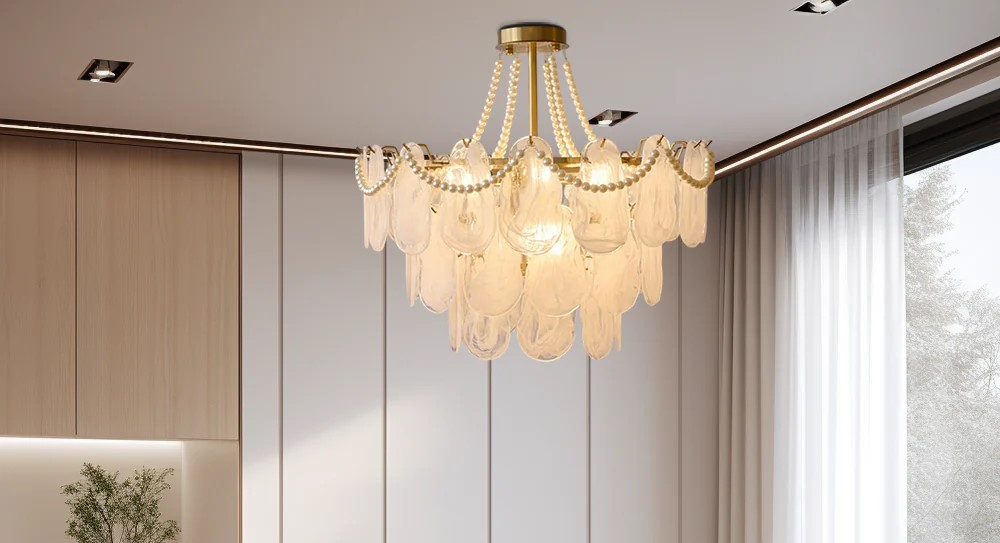
Famous Moments in Movies and Theatre
Chandeliers have shone brightly in famous films and plays. They are not just decorations but help create mood and drama. In The Phantom of the Opera, the falling chandelier is unforgettable. It shows both chaos and beauty, matching the Phantom’s personality. The chandelier feels alive, adding mystery and tension to the story.
In Disney’s Beauty and the Beast, the chandelier has a magical role. During Belle and the Beast’s ballroom dance, it lights up the scene. Its soft glow and fancy design make the moment feel like a fairytale. It stands for love and change. Whether crashing or glowing, chandeliers in stories often have deeper meanings that pull you in.
Meaning in The Phantom of the Opera and Beauty and the Beast
In The Phantom of the Opera, the chandelier is more than a stage prop. Its dramatic fall shocks the audience and adds mystery. It shows the mix of beauty and destruction, making it unforgettable.
In Beauty and the Beast, the chandelier is part of the castle’s magical look. It makes the setting feel warm and charming, showing themes of love and kindness. These stories prove chandeliers can be symbols, adding emotion and meaning to tales.
Glamour in The Great Gatsby and the Jazz Age
When you think of The Great Gatsby, you imagine big parties and shiny chandeliers. These chandeliers show the wealth and glamour of the 1920s. But they also remind us of the shallow side of that time, where looks hid deeper problems.
Chandeliers during the Jazz Age weren’t just lights. They were signs of style and richness. Their sparkling crystals showed the excess of the era, fitting perfectly into Gatsby’s world. Even now, they remind us of the mix of beauty and emptiness from that unforgettable time.
The Modern Legacy of the Royal Chandelier
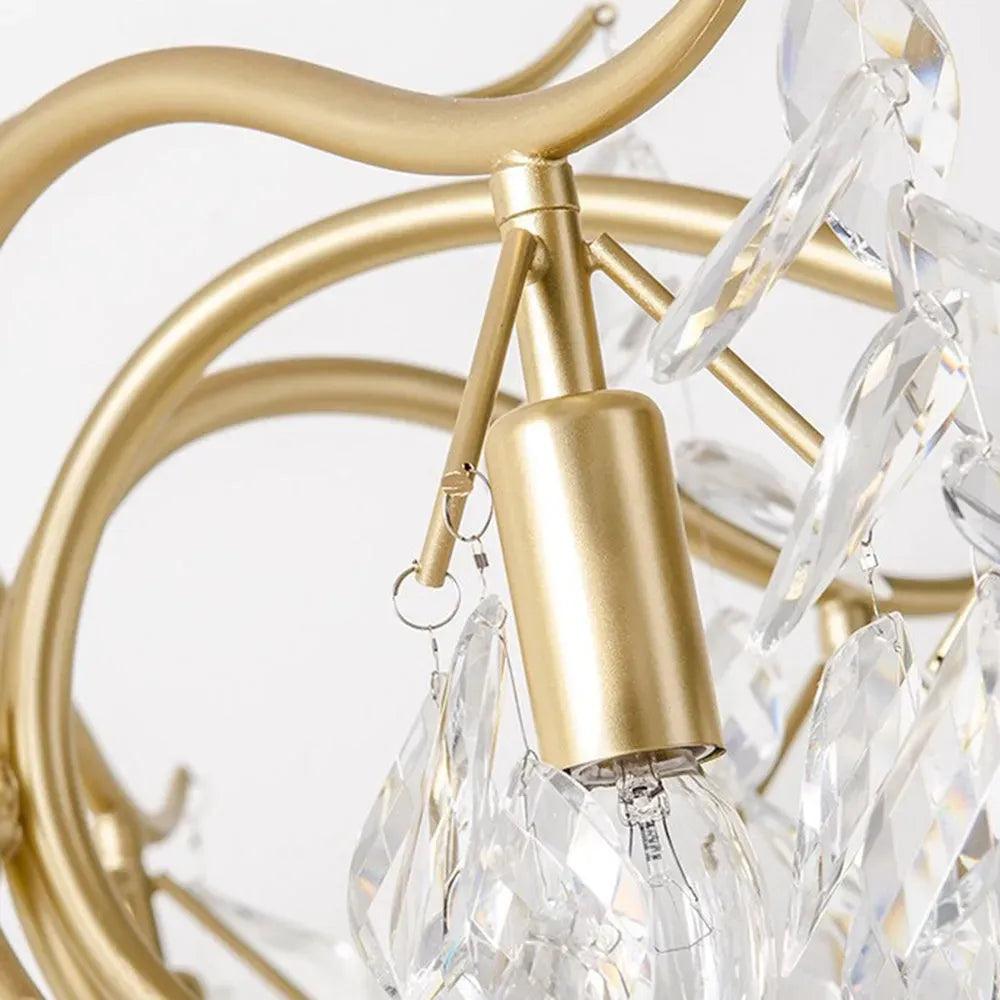
Chandeliers in Today’s Homes and Style
Chandeliers are no longer just for palaces. They are now popular in modern homes and designs. You might think they’re old-fashioned, but today’s styles prove they’re not. Modern chandeliers mix classic looks with new ideas, making any room beautiful. Designers enjoy trying new materials, shapes, and lighting tricks to create fresh designs.
A survey by 1stDibs shows chandeliers are still a top choice. Why? They fit many styles. Whether your room is simple or fancy, there’s a chandelier for it. Some even look like art, combining beauty and usefulness.
Tip: A chandelier isn’t just a light—it adds elegance and drama to your space.
Bold New Designs Like the Dragon Chandelier
Modern chandeliers aren’t just crystals and candles anymore. Designers are creating bold and unique pieces. For example, the dragon chandelier is more than a light. It’s a piece of art inspired by mythical creatures, adding magic to your room.
Other creative designs are also gaining attention. The Manhattan chandelier mixes old and futuristic styles. Luc Merx’s 'Fall of the Damned' uses 3D printing for a dramatic look. Geometric designs like the Hedron chandelier turn simple shapes into amazing creations. With new tools and ideas, designers can now make their wildest dreams real.
The Chandelier as a Symbol of Elegance
Even with all these changes, chandeliers remain timeless. They are more than lights—they stand for beauty, luxury, and history. Think of royal halls where chandeliers were always the centre of attention. Even in modern spaces, they bring the same grand feeling.
You’ll see chandeliers in fashion shows and stylish cafes. They show how something classic can still feel modern. Whether it’s a dragon chandelier or a crystal one, these lights continue to amaze us with their charm and elegance.
The chandelier has come a long way, hasn’t it? From gracing royal courts to starring in films, it’s more than just a light fixture. It’s a storyteller. You see it and instantly feel the elegance, power, and drama it brings to any space. What’s amazing is how it connects the past with the present. Whether in a grand palace or your own home, the chandelier continues to shine as a timeless icon. It’s proof that some things never go out of style.
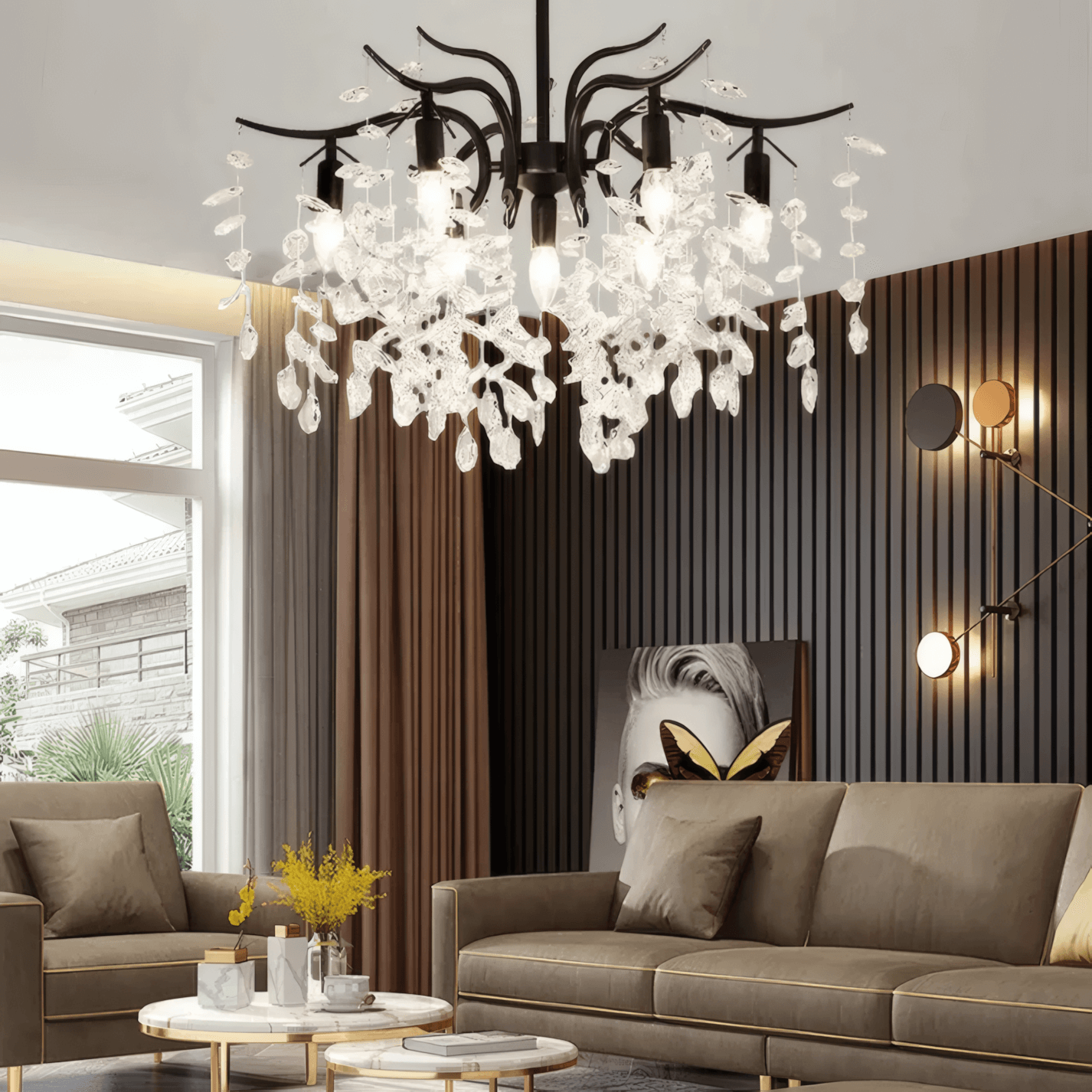
FAQ
Why are chandeliers always popular in decor?
Chandeliers mix beauty and usefulness. Their fancy designs and ability to change a room’s feel make them special. Whether old-fashioned or new, they always bring style.
Can small rooms have chandeliers?
Yes, they can! There are many small chandeliers now. These fit perfectly in cosy spaces like bedrooms or tiny dining areas without looking too big.
How do you pick the best chandelier for your home?
Think about your room’s size, style, and ceiling height. Big chandeliers look great in large rooms. Simple ones match modern homes. Make sure it suits your decor.
Are today’s chandeliers good for saving energy?
Yes, they are! Many modern chandeliers use LED bulbs. These bulbs save energy, last longer, and are better for the environment.
How do you clean a chandelier?
Dust it often to keep it shiny. For a deeper clean, use a damp cloth or special cleaner. Always turn off the power first to stay safe.

